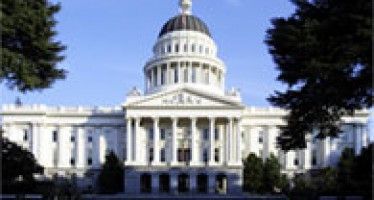Is high speed rail unstoppable?
Mar. 12, 2010
Sometimes, being a legislator can be a very lonely job. Just ask Assembly member Diane Harkey, R-Dana Point. She’s taking on the proposed California High Speed Rail project, and she doesn’t have a lot of help or support.
Not sure if you’ve noticed, but high-speed rail is popular. Really popular. The Sierra Club loves it, as does Bay Area Air Quality Management District. At least nine chambers of commerce, five labor unions and two dozen cities and counties back it.
“We have come together because the building of a high-speed train system in California will create sustainable green jobs, spur economic growth and protect our environment,” said a recent letter signed by the California Chamber of Commerce, California Labor Federation and the Sierra Club.
And why isn’t everyone and their brother cheering for high-speed rail? Bullet trains are far more energy-efficient than jet airliners or automobiles. They’re environmentally cleaner and don’t suck up so much foreign oil. And the construction and maintenance of a brand-new 500-mile long rail corridor (bullet trains can’t safely use existing tracks) will create thousands of jobs. And, eventually, ticket prices might even be more attractive than driving or flying.
In fact, some high-speed rail supporters – like Gov. Arnold Schwarzenegger, for instance – see the trains as exemplifying the United States’ premier power and influence in the world. “I came to America because America is No. 1 in just about everything: the biggest bridges, the biggest buildings,” Schwarzenegger said in Jon Gertner’s June 14, 2009 New York Times Magazine article “Getting Up to Speed.” “Everything here was always huge and generous. The greatest opportunities. And then as you live here you see we are slipping in some areas. Look at the train system. They’re running at the same speed as they were 100 years ago. Is that what No. 1 does?”
Gertner pointed out that many trains a century ago actually ran faster (and more often on time) than they do now, but Arnold’s excitement at the prospect of a many dozen slim metal tubes zipping up and down the state at 220 miles per hour – shuttling 400 or so passengers between Los Angeles and San Francisco in just two hours and 40 minutes – is undeniable.
Too bad we can’t afford the thing. The projected cost is $40 billion to $60 billion, and with construction still years away, the final cost will probably end up much larger. The trains alone cost $30 million to $35 million each, and we’ll need a hundred of them. “If it can get started,” Gertner wrote, “the California high-speed train would almost certainly be the most expensive single infrastructure project in United States history.”
Enter Harkey and her new bill, AB2121, simply titled “Eliminate Funding for High-Speed Rail.”
“While there may be some benefits to high speed rail it should not come at the expense of our schools, local transportation, public safety, and health and human services,” states an AB 2121 fact sheet distributed by Harkey’s office. “While some private investment may be possible toward the end of the project if successful, it is highly likely that, as with any other public transportation project, HSR will need to be substantially subsidized by our heavily indebted state.”
Project supporters like to point out that the trains, “once built,” will “not require an operating subsidy.” This may be true, but it will also require many billions in federal subsidies and state bonds – all of which will eventually fall on taxpayer shoulders.
Harkey’s bill simply negates the $10 billion high speed rail bond passed by voters in November 2008. That won’t kill the project outright, but it would put a pretty big block in its path.
“In these times of chronic budget deficits, the Legislature has opted to issue bonds to fund high priority projects,” states the AB2121 fact sheet. “Every dollar that is borrowed to pay for high speed rail will cost the state approximately $1.60 for debt service and repayment.”
Harkey introduced on Feb. 18, it is now sitting in the Assembly Transportation Committee. But don’t expect it to move very far beyond it. In fact, the bill doesn’t even appear on Harkey’s “My Legislation” page of her Assembly website. And when I asked one of Harkey’s aides whether anyone had stepped forward to co-sponsor the legislation, she frowned with a mix of humor and pity.
I’d forgotten, it seems, that necessity and intelligence often have nothing to do with successful legislation.
-Anthony Pignataro
Related Articles
Assembly Republican leader tries to streamline the Legislature
Otto von Bismarck, the German chancellor in the 19th Century, never visited California. But he could have had the state
Bullet-train coverage: All the happy talk that fits
The Fresno Bee’s editorial page has cheered longer and harder for the bullet-train project than just about any newspaper in
A cruel month for public employee unions
June 22, 2012 By Joseph Perkins California public employee unions were already having a bad June, what with passage of




